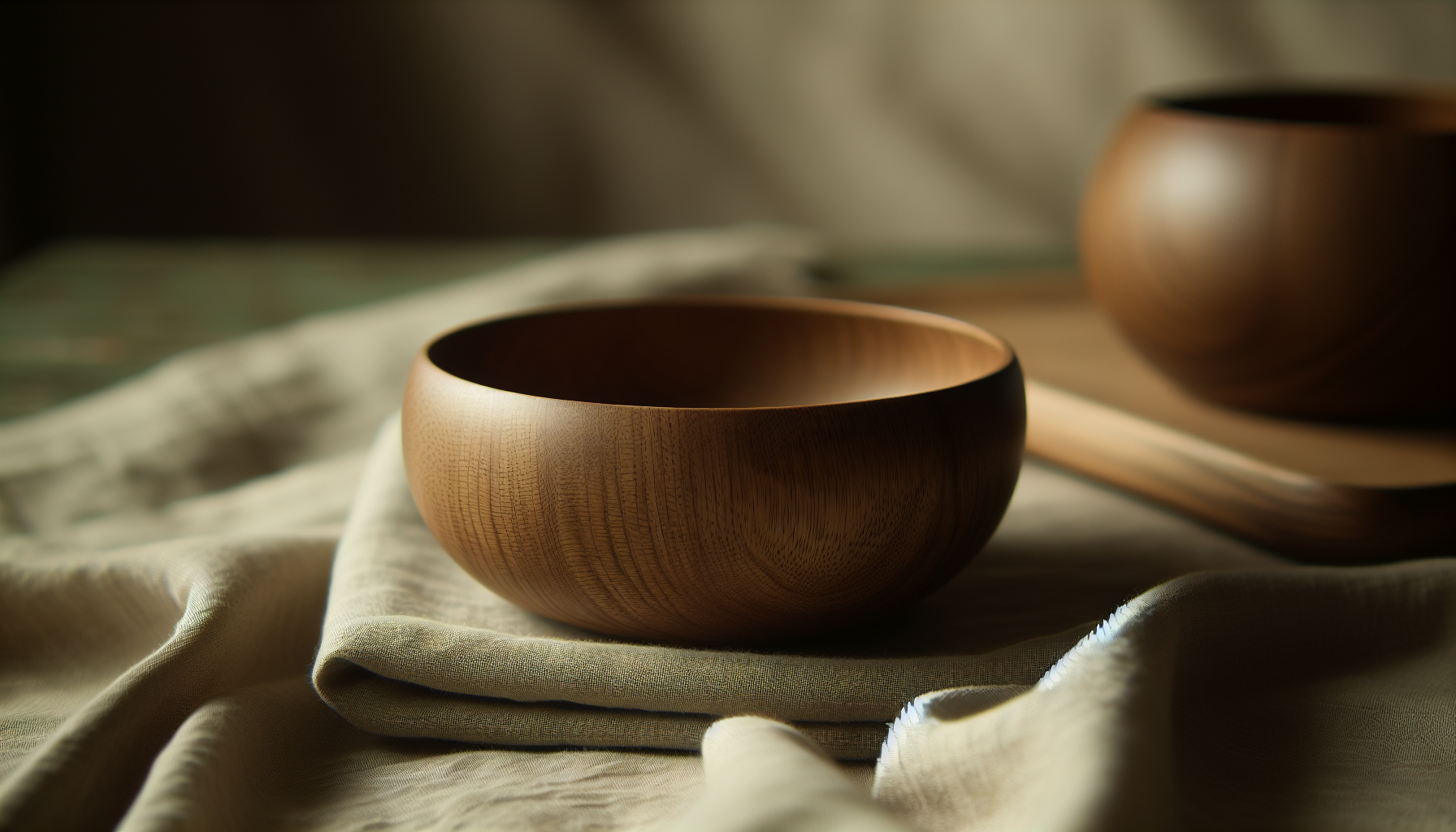Have you ever wondered how you can combine aesthetic beauty with sustainability in your home? The fusion of Japandi style and zero-waste living might be your answer. By learning about Japandi interiors and their potential to embody zero-waste principles, you could create a beautiful, serene, and eco-friendly living space.
Understanding the Basics of Japandi Interiors
Japandi interiors blend Japanese minimalism with Scandinavian simplicity, creating an elegant and functional environment. By focusing on clean lines, natural materials, and a muted color palette, this design philosophy promotes a sense of peace and tranquility.
The essence of Japandi is rooted in functionality and beauty, which means every piece in your space has a purpose. This emphasis on efficiency also aligns perfectly with the principles of zero-waste living, which advocates for reducing waste and maximizing resources.
The Key Elements of Japandi Design
-
Minimalism: In Japandi design, less is definitely more. Clutter is minimized to enhance the beauty of each piece, resulting in a serene atmosphere that encourages mindfulness.
-
Natural Materials: Think wood, bamboo, linen, and wool. These materials not only provide warmth and texture but are also often more sustainable than synthetic options.
-
Muted Colors: Japandi interiors typically feature a calm color palette with soft browns, greys, and whites inspired by nature. These colors can create a cohesive and soothing environment.
-
Functionality: Each element in your space should serve a purpose. The focus is on functionality, ensuring that every item you have adds value to your home.
-
Craftsmanship: Quality over quantity reigns supreme in Japandi aesthetics. Handmade and well-crafted items are treasured, fostering appreciation for artistry.
The Principles of Zero-Waste Living
Zero-waste living encourages you to rethink your relationship with consumables. The goal isn’t merely to recycle but to avoid waste from the start. By integrating these principles into your lifestyle and home design, you can contribute positively to the planet.
-
Refuse: Say no to unnecessary items. Avoid single-use plastics and consider the impact of each purchase on your environment.
-
Reduce: Declutter and simplify your belongings. Keep only those items that genuinely enhance your life and align with your values.
-
Reuse: Find new purposes for items instead of discarding them. Reusing allows you to get creative and maintain a sense of history in your home.
-
Recycle: When you can’t refuse, reduce, or reuse, make sure to recycle responsibly. Familiarize yourself with your local recycling policies to ensure proper disposal.
-
Rot: Composting is an excellent way to deal with organic waste. Doing this not only reduces waste but also enriches your garden soil.
Why Combine Japandi and Zero-Waste?
Incorporating zero-waste principles into Japandi interiors is a beautiful synergy. This combination promotes a conscious lifestyle focused on sustainability, making your home more than just a living space. It becomes a sanctuary that reflects your values.
By merging these two concepts, you can create a haven that emphasizes minimalism and mindfulness. You’ll find that the act of mindful consumption can significantly enhance your living environment.
Practical Steps to Create Zero-Waste Japandi Interiors
Achieving a zero-waste lifestyle in your home doesn’t have to be overwhelming. Here are some practical steps you can take to blend Japandi aesthetics with sustainable living.
Choosing Sustainable Materials
Opt for furniture and décor items made from sustainably-sourced materials. Look for:
| Material | Benefits |
|---|---|
| Bamboo | Fast-growing and renewable, it’s strong and lightweight. |
| Reclaimed Wood | Reduces deforestation and adds character to your space. |
| Organic Cotton | Grown without harmful chemicals, safe for the planet. |
| Linen | Durable and biodegradable, perfect for soft furnishings. |
By choosing these materials, you are contributing to a healthier planet while aligning with the Japanese appreciation for nature and Scandinavian functionality.
Incorporating Vintage and Second-Hand Items
One of the most effective ways to practice zero waste is to give new life to old items. Vintage or second-hand finds not only reduce waste but offer unique character to your space:
- Thrift Stores: Check out local thrift shops for unique furnishings or decorative pieces.
- Online Marketplaces: Websites and apps allow you to buy and sell used items. You can find mid-century furniture or handmade decor that fits your vision.
- Family Heirlooms: Incorporating family pieces gives your home a personal touch and tells a story.
Creating a Functional Layout
Planning your layout is vital in Japandi design. A well-thought-out space not only looks appealing but also functions efficiently. Consider these points:
- Multi-Functional Furniture: Opt for pieces that serve multiple purposes. For instance, a bench that doubles as storage can free up space without compromising style.
- Open Space: Maintain an open layout to promote flow and ease of movement. This simplicity results in a calm and collected atmosphere.
- Arranging by Functionality: Place items based on their purpose. For example, keep a reading nook free from clutter to promote relaxation.
Mindful Shopping
To truly embrace zero waste, your shopping habits might need an adjustment. Keep these tips in mind when making purchases:
- Quality Over Quantity: Invest in fewer pieces that are durable and meaningful to you.
- Research Brands: Support companies committed to sustainability and ethical production practices.
- Find Local Artisans: Local craftspeople often use sustainable materials and create unique items, enhancing the local economy while minimizing your carbon footprint.
Upcycling and Repurposing
Upcycling is an excellent way to refresh old items while reducing waste. Here are a few ideas:
- Furniture Makeover: Sanding and painting old chairs can breathe new life into them and make them fit seamlessly into your interior style.
- Planters from Glass Jars: Converted glass jars not only reduce waste but add a charming touch to your décor.
- Fabric Scraps: Turn leftover fabric into decorative pillows or wall art. This practice is perfectly aligned with the Japandi ethos of creativity and attention to detail.
Embracing the Zero-Waste Mindset
Creating a truly zero-waste Japandi interior is about adopting a mindset focused on sustainability. It requires conscious choices and an ongoing commitment to mindful living.
Educating Yourself and Others
Continuous learning will help you stay informed about sustainable practices. Share your journey with friends and family, which can inspire them to make more environmentally-friendly choices.
- Join Workshops: Participate in sessions focused on sustainability, like DIY furniture restoration or zero-waste cooking.
- Read Books: There’s a plethora of literature on minimalism and sustainability—from Marie Kondo’s organizing concepts to Bea Johnson’s zero-waste lifestyle principles. These insights can enhance your understanding and application of these methodologies.
Building a Community
Finding like-minded individuals can provide encouragement and support. Seek out local groups or online forums focusing on sustainability:
- Online Communities: Platforms like Reddit or Facebook often have groups dedicated to zero-waste living and design.
- Local Meetups: Look for eco-friendly events in your area where you can network, share ideas, and gain insights.
Benefits of Zero-Waste Japandi Interiors
Integrating zero-waste principles into your Japandi design not only enhances your living space but also brings you a myriad of benefits.
1. Environmental Consciousness
You contribute to lowering waste and addressing environmental issues. Each eco-friendly choice extends to reduce your carbon footprint, promoting a healthier planet.
2. Financial Savings
Being mindful of your purchases ultimately helps you save money. Fewer, well-chosen items reduce the need for constant buying, while upcycling and utilizing second-hand items can also cut costs substantially.
3. Creating a Unique Space
Your home reflects your personality and values. By incorporating vintage finds and repurposed items, you create a unique environment that tells a story.
4. Improved Well-being
Living in a serene and clutter-free space can boost mental well-being. By minimizing distractions and promoting mindfulness, you contribute to lower stress levels and greater overall happiness.
5. Cultivating Mindfulness
Adopting a zero-waste lifestyle encourages you to think deeply about your consumption habits. This mindfulness can extend beyond home décor, influencing aspects of your everyday life and interactions with others.
Conclusion
By merging zero-waste principles with Japandi interiors, you’re not only enhancing the beauty and functionality of your home but also supporting a more sustainable future. Each purchase and design choice contribute to a healthier planet and promote a lifestyle centered on mindfulness and intentionality.
Now that you have a roadmap to creating zero-waste Japandi interiors, consider how you can begin your journey. Every little choice counts, and you have the power to create an inspiring space that reflects you and your values while caring for the environment.

